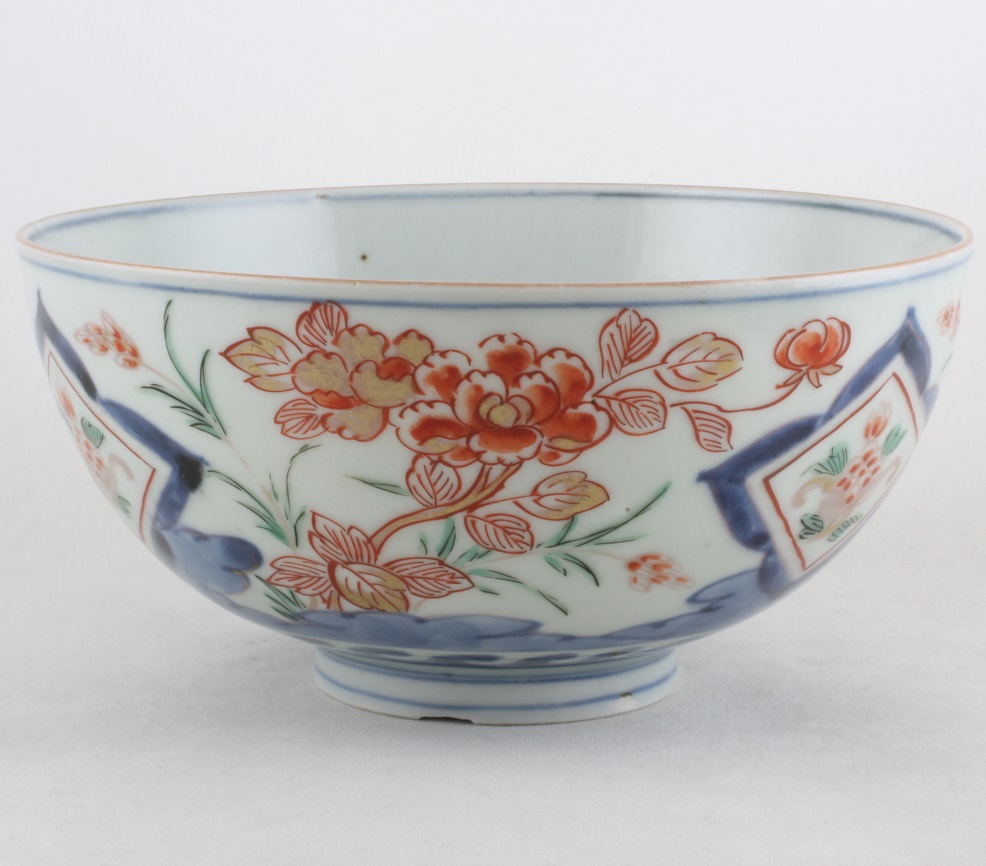
Sold Ceramics - Sold Japanese Imari 1690-1800 - Other wares - Page 1
Object 2012393
Bowl
Japan
1750-1770
Height 74 mm (2.91 inch), diameter 150 mm (5.91 inch), diameter of footring 53 mm (2.09 inch), weight 279 grams (9.84 ounce (oz.))
Bowl on footring, straight sides. Imari, decorated in underglaze blue, iron-red and gold with flowering peony plants alternating with lozenge shaped panels filled with flower sprays. Round the foot a stylised waves pattern border. On the outer and inner rim a single line. On the bottom a flowering peony growing from behind an fence.
Underglaze blue objects were ready after one firing. Enamelled, 'coloured' wares had to be fired a second time in a 'muffle' kiln at a lower temperature of about 800 degrees Celsius. Enamels were made of a powdered mixture of glaze and mineral oxides, copper being used for green, iron for red, and iron or antimony for yellow. Suspended in a binding agent such as vegetable oil, they were painted onto the glaze of a single-fired piece, which was fired a second time once the enamel decoration had dried. The lower temperature is required because enamels 'cook', 'burn' and are wasted when high-fired. Gold and silver require a third firing at an even lower temperature of about 600 degrees Celsius. (Jörg 2003/1, p.15)
This bowl is a good example of later Japanese export ware, which is surprisingly rare in Dutch collections.
Condition: A firing flaw to the footring..
Reference:
Price: Sold.


 create websites
create websites